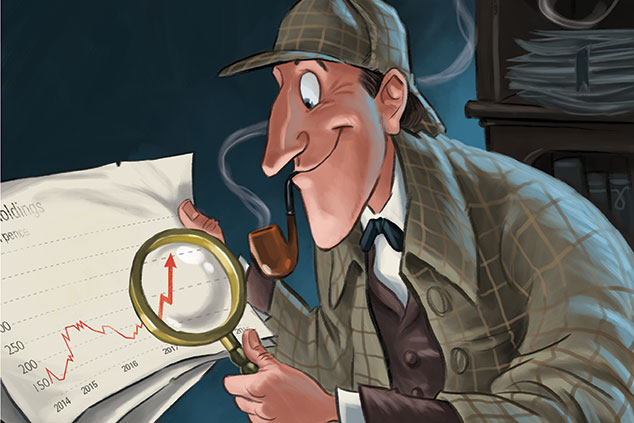
Buy-and-hold investors should want to see evidence of several key characteristics before they commit to a company. Richard Beddard explains what they are and highlights his current favourite buys.
Buying stocks and holding them for the long term makes sense, as a consideration of the long-term performance of the stockmarket reveals: time has a way of erasing the peaks and troughs in share prices associated with exuberance and market panics. Over a long enough time period, major US and UK stockmarket indices go up, mirroring growth in the economy and corporate profits.
No seasoned buy-and-hold investor expects their investments to rise all the time. Perhaps the strategy’s most famous exponent, Warren Buffett, routinely tells people that if they would panic if the value of their investments fell 50%, then they should not invest in shares. He should know: shares in his investment company, Berkshire Hathaway, have fallen this much in the past, most recently between December 2007 and March 2009.
Berkshire Hathaway’s fate was not unusual. Investors who had bought shares in the S&P 500, an index of major US companies, saw it fall by more than 55% during the financial crisis, from the peak in October 2007 to the trough in March 2009. Not coincidentally, Kenneth Solow, the chief investment officer of a US wealth-management firm, published a book entitled Buy and Hold is Dead (Again) in 2009. Since the market’s nadir that year, the S&P 500 has risen by more than 350%.
Even if you had had the misfortune to invest in an index fund at the pre-crisis peak in October 2007, your investment would have doubled by today (not including dividends). Bearing in mind that outcome is the unlikely result of buying on the worst possible day right on the eve of a stockmarket crash, it seems the claim that buy-and-hold is dead was wrong, again.
Hitch a ride with the stars
Shares generally appreciate over the long term, which has encouraged the growth in index-tracking funds as a cheap and simple method of buying and holding them, a strategy that makes even more sense if investors avoid the risk of buying at the worst time in the worst market by drip-feeding money into globally diversified funds. Occasionally, though, markets test the patience of investors with the farthest horizons. UK indices have risen less since the pre-crisis highs of 2007, and Japan’s Nikkei 225 index remains stubbornly below its December 1989 peak.
The fear of being trapped in a moribund market is one reason some investors try to improve on market returns by picking individual shares to buy and hold. For most of his career Buffett has trounced the market. In the UK, fund managers such as Terry Smith at Fundsmith, Nick Train at Lindsell Train, and Keith Ashworth Lord, who runs the CFP SDL UK Buffettology fund, are off to flying starts. In one sense, picking individual stocks in the expectation that they will do better than the market average is a fool’s errand because most shares do worse than average. The overall progress of the stockmarket is the aggregate of a minority of high-performing stocks and a majority of lacklustre, sub-par performers. Although the chances of picking some of the high performers may seem slim, you only need a couple to make a portfolio really sing.
Think decades, not days
But in another sense, buying and holding individual shares is an errand ideally suited to private investors. Unlike most fund managers, private investors need not be swayed by short-term movements in share prices because they have no business to lose when people lose faith in them due to falling prices. Neither are the expensive accoutrements of professional fund management, teams of analysts and rows of Bloomberg terminals necessary. Buy-and-hold investors can discover good companies by reading annual reports, appraising products and services, and visiting the companies, for example.
Over time, the goal of the buy-and-hold investor is to become so familiar with a business that they understand its long-term prospects better than most market traders, a task made easier by the fact that most participants in the market are not trying to gauge the long-term prospects of businesses. The key to buying and holding is to focus on attributes other than the capricious share price – fundamental attributes that allow firms to prosper through thick and thin. It can take many years and sometimes decades for a company to realise its potential fully, timescales over which investors can really get to know a business.
Subscribers can read it in the digital edition or app